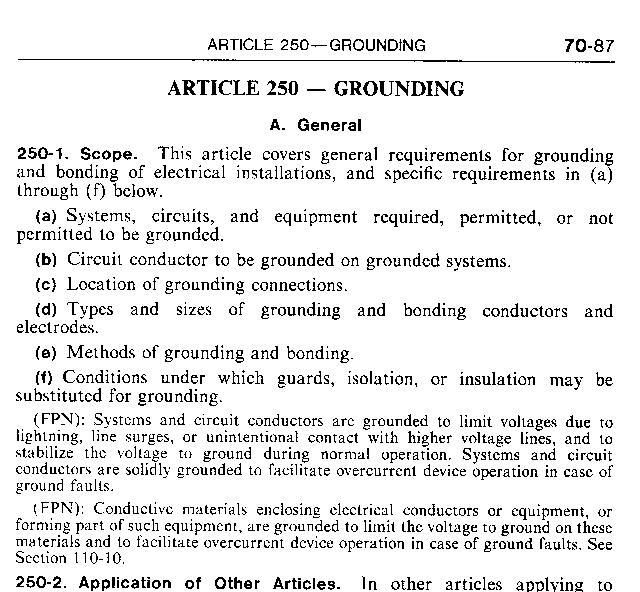jxofaltrds
Retired ESI
- Location
- Mike P. Columbus Ohio
- Occupation
- Creator
Let?s look at what it does say
250.104 Bonding of Piping Systems and Exposed Structural Steel.
(A) Metal Water Piping. The metal water piping system shall be bonded as required in (A)(1), (A)(2), or (A)(3) of this section. The bonding jumper(s) shall be installed in accordance with 250.64(A), (B), and (E). The points of attachment of the bonding jumper(s) shall be accessible.
(1) General. Metal water piping system(s) installed in or attached to a building or structure shall be bonded to the service equipment enclosure, the grounded conductor at the service, the grounding electrode conductor where of sufficient size, or to the one or more grounding electrodes used. The bonding jumper(s) shall be sized in accordance with Table 250.66 except as permitted in 250.104(A)(2) and (A)(3).
Where does it say that the metal pipes are required to be electrically continuous? I can?t see it anywhere. Am I looking at the wrong section?
What I see is that any bonding jumper installed must land either on the service enclosure, the neutral, an electrode conductor, or an electrode. So to land the bonding jumper back to another pipe would be a violation of 250.4(A)(1).
Maybe the part of the sky you are looking at is pretty but the sky that someone else is looking at may be cloudy unless you think that the entire sky is only the part you can see such as some are looking at bonding of metal water piping systems.
Many times on this forum the proposal has been posted where the code panel says that unless it is a complete metal piping system it does not require a 250.66 bonding conductor. If these fittings do not make the pipe electrically continuous then forget the 250.66 bond.
?250.4 (5) Effective Ground-Fault Current Path. Electrical equipment and wiring and other electrically conductive material likely to become energized shall be installed in a manner that creates a low-impedance circuit facilitating the operation of the overcurrent device or ground detector for high-impedance grounded systems. It shall be capable of safely carrying the maximum ground-fault current likely to be imposed on it from any point on the wiring system where a ground fault may occur to the electrical supply source. The earth shall not be considered as an effective ground-fault current path.?3
Nice article here:
http://www.iaei.org/magazine/2011/07/over-code-the-anatomy-of-a-code-change-proposal/
I love the jumping of Water Conditioning Equipment.
I do not see the need for a code change.
(C) Intention. This Code is not intended as a design specification
or an instruction manual for untrained persons.



